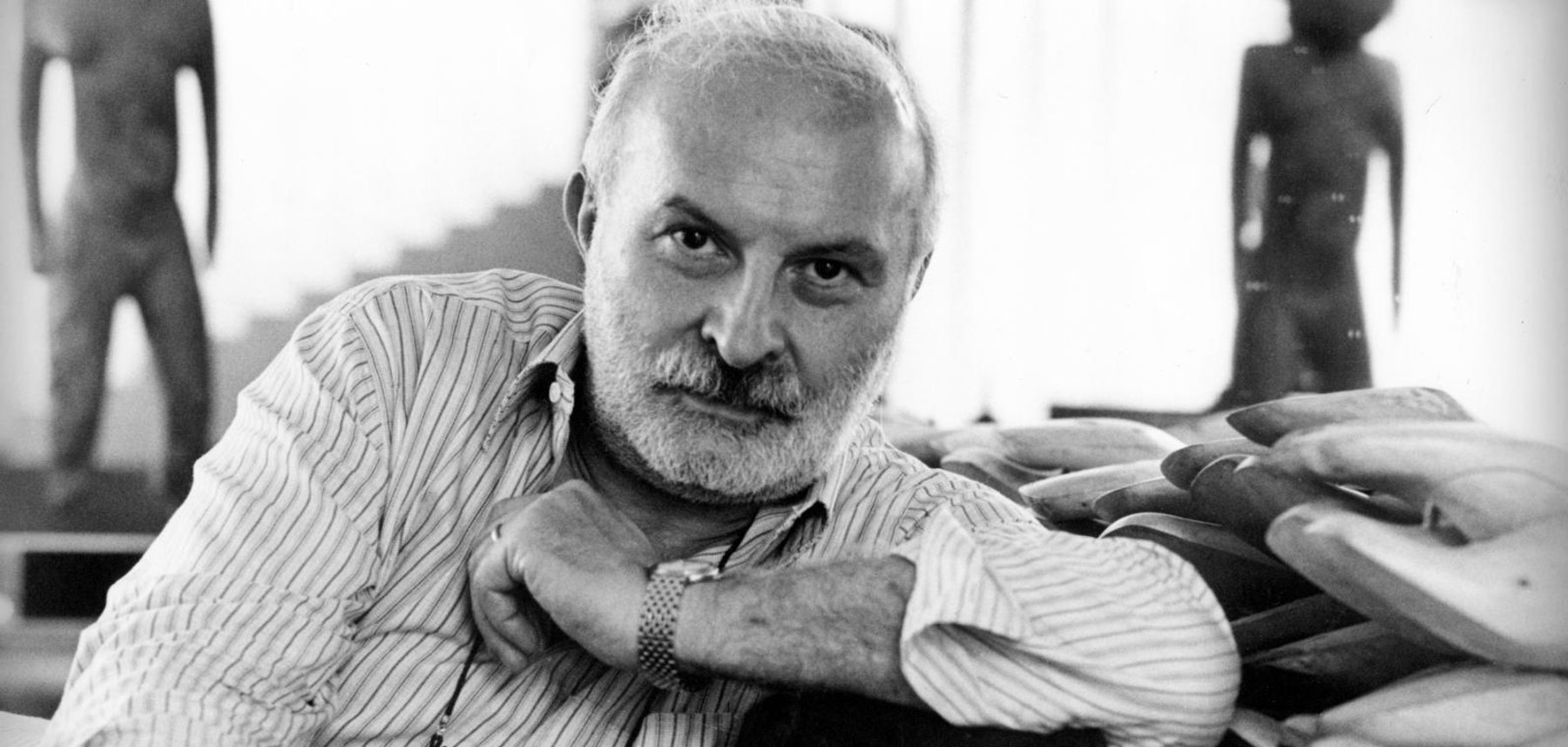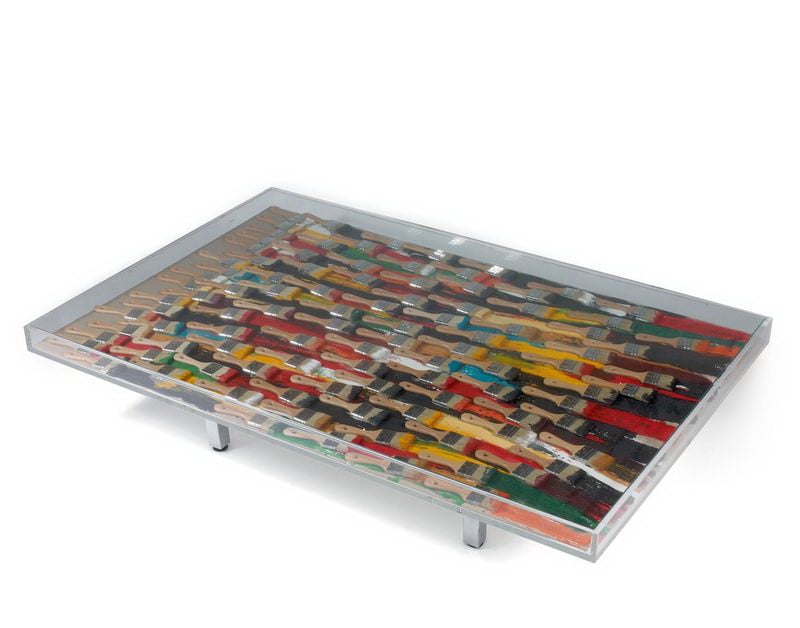ARMAN

Biography
Arman was born in 1928 in Nice. He lived and worked in the United States. The artist, a member of the Nouveau Réalisme movement, is famous for his accumulations, combustions, and destructions of ordinary objects.
Arman learned oil painting and photography techniques from his father, an antique dealer and art lover, as well as a photographer and cellist. After obtaining his baccalaureate in philosophy and mathematics, he completed his studies in 1949 at the École Nationale des Arts Décoratifs in Nice and the École Nationale du Louvre. During this period, Arman developed a passion for Eastern philosophy, primitive Asian art, and the martial art of judo, and became a judo instructor at the Spanish Bushido Kai school. He met artists Yves Klein and Claude Pascal, with whom he became friends. He also served in the French army in Indochina.
Arman began his artistic production with the accumulation of objects, inspired by the Dadaist artist Kurt Schwitters. During his third exhibition at the Iris Clert Gallery in Paris in 1958, Arman displayed his 2D accumulations, titled "Cachets." These stamps on paper and fabric marked a success and a significant turning point in the young artist's career. At the time, he signed his works with his first name, as a tribute to Van Gogh, who signed his works with his first name, “Vincent.” In 1957, as a result, the artist changed his name from Armand to Arman. When he became a U.S. citizen in 1973, he adopted the American legal name, Armand Pierre Arman. However, he continued to use the name “Arman” for his public persona.
Arman developed his most distinctive style between 1959 and 1962, when he created his most famous concepts: "Accumulation" and "Poubelle." The accumulations are common, identical objects that the artist accumulated on polyester molds or in Plexiglas boxes. During this period, Arman and Yves Klein captured the attention of the European art community with their exhibitions at the Iris Clert Gallery. In 1958, Klein exhibited “Le Vide,” and two years later, Arman filled the Parisian gallery with trash, giving life to “Le Plein.”
In October 1960, Arman, Yves Klein, François Dufrêne, Raymond Hains, Martial Raysse, Daniel Spoerri, Jean Tinguely, and Jacques Villeglé, with art critic and philosopher Pierre Restany, founded the Nouveau Réalisme group; César, Mimmo Rotella, Niki de Saint Phalle, and Christo joined later. The group of young artists proposed a new concept of art for the consumer society of the 20th century, reaffirming humanist ideals to face the expansion of industry.
Arman made his debut in the United States in 1961 with his "Destruction," "Coupes," and "Colères" works, featuring objects that were cut, burned, or crushed and presented on canvases, often using objects with strong identities, such as musical instruments (especially violins and saxophones) or bronze statues. In the United States, the artist also met Marcel Duchamp.
When he moved to New York, Arman began working in public spaces, creating monumental sculptures such as Long Term Parking, which is permanently exhibited at the Château de Montcel in Jouy-en-Josas, France. The sculpture, completed in 1982, is an accumulation of 60 cars, standing 18 meters tall.
Arman passed away in New York in 2005.
Arman learned oil painting and photography techniques from his father, an antique dealer and art lover, as well as a photographer and cellist. After obtaining his baccalaureate in philosophy and mathematics, he completed his studies in 1949 at the École Nationale des Arts Décoratifs in Nice and the École Nationale du Louvre. During this period, Arman developed a passion for Eastern philosophy, primitive Asian art, and the martial art of judo, and became a judo instructor at the Spanish Bushido Kai school. He met artists Yves Klein and Claude Pascal, with whom he became friends. He also served in the French army in Indochina.
Arman began his artistic production with the accumulation of objects, inspired by the Dadaist artist Kurt Schwitters. During his third exhibition at the Iris Clert Gallery in Paris in 1958, Arman displayed his 2D accumulations, titled "Cachets." These stamps on paper and fabric marked a success and a significant turning point in the young artist's career. At the time, he signed his works with his first name, as a tribute to Van Gogh, who signed his works with his first name, “Vincent.” In 1957, as a result, the artist changed his name from Armand to Arman. When he became a U.S. citizen in 1973, he adopted the American legal name, Armand Pierre Arman. However, he continued to use the name “Arman” for his public persona.
Arman developed his most distinctive style between 1959 and 1962, when he created his most famous concepts: "Accumulation" and "Poubelle." The accumulations are common, identical objects that the artist accumulated on polyester molds or in Plexiglas boxes. During this period, Arman and Yves Klein captured the attention of the European art community with their exhibitions at the Iris Clert Gallery. In 1958, Klein exhibited “Le Vide,” and two years later, Arman filled the Parisian gallery with trash, giving life to “Le Plein.”
In October 1960, Arman, Yves Klein, François Dufrêne, Raymond Hains, Martial Raysse, Daniel Spoerri, Jean Tinguely, and Jacques Villeglé, with art critic and philosopher Pierre Restany, founded the Nouveau Réalisme group; César, Mimmo Rotella, Niki de Saint Phalle, and Christo joined later. The group of young artists proposed a new concept of art for the consumer society of the 20th century, reaffirming humanist ideals to face the expansion of industry.
Arman made his debut in the United States in 1961 with his "Destruction," "Coupes," and "Colères" works, featuring objects that were cut, burned, or crushed and presented on canvases, often using objects with strong identities, such as musical instruments (especially violins and saxophones) or bronze statues. In the United States, the artist also met Marcel Duchamp.
When he moved to New York, Arman began working in public spaces, creating monumental sculptures such as Long Term Parking, which is permanently exhibited at the Château de Montcel in Jouy-en-Josas, France. The sculpture, completed in 1982, is an accumulation of 60 cars, standing 18 meters tall.
Arman passed away in New York in 2005.
Artworks
Zoom

Table Brush and Brunch
Accumulation of brushes on canvas painted with acrylic, in a Plexiglas table, glass top - Limited edition, signed and numbered
13 x 60 x 39 "
available
Zoom

Waiting to exhale, 1997
Accumulation of cigars embedded in epoxy resin - Limited edition of 100ex signed and numbered
16 x 9 x 3 "
available
Contact
This work interests you ?
Do not hesitate to contact us for any inquiries.

